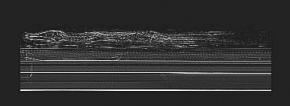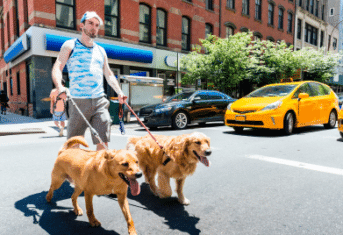Day at the Museum: The Animal Medical Center Sequel

Day at the Museum: The Animal Medical Center Sequel
The Animal Medical Center has a computer system to manage our diagnostic imaging, including x-rays, ultrasound, CT scans and MRIs. The Picture Archiving and Communications System (PACS) lists all the images for any given day. If you looked at the list for June 17, you would see my patient Dakota, who got a chest x-ray, Chippie, the dog who had a full series of dental x-rays, and BooBoo who had a brain MRI — a typical list for a Friday.
But reading down the list you get to Croc 1, Bird 2, Snake 3 and Ibis 4. These images come from the oldest patients ever seen at The AMC. No, not a 25 year old dog or a 30 year old cat. These 32 patients are 2,500 year old animal mummies.
Like many AMC patients, these animals came to The AMC across the Brooklyn Bridge into Manhattan. Unlike any other AMC patients, these patients belong to the Brooklyn Museum’s Egyptian collection.
Like all patients who come to The AMC, they came for our diagnostic expertise, utilizing our state of the art equipment. In this case, the animal mummies came to The AMC for CT scanning in our 64-slice CT scanner.
The AMC’s 64-slice CT scanner rapidly produces high quality images. So fast, all 32 were scanned in one day as outpatients! Rapid is better for our usual patients, since the faster the scan, the shorter the anesthesia time. For the animal mummies, the high quality images are critical in helping AMC’s board certified radiologist, Dr. Anthony Fischetti, collaborate with the curators from the Brooklyn Museum to decipher the mummy’s contents. The 64-slice CT scanner can recreate three dimensional and multiplanar images of the patient. In our usual patients, we use these features to better diagnose and treat illnesses. Our colleagues at the Brooklyn Museum plan to use the reconstructed CT images to study the mummies’ contents without disrupting the intricate linen wrapping.
If our CT scanner is so fast and can scan thirty two mummies in one day, you might wonder why your AMC veterinarian wanted your pet here all day when it had a CT scan. A CT scan in one of our usual patients requires administration of a short-acting anesthetic. Obviously, an animal mummy does not require anesthesia, the associated monitoring of the heart, respiration and blood pressure and does not have to recover from anesthesia. All these differences shorten the procedure time.
Most of our usual patients have two CT scans back to back. The first scan is before and the second is after administration of a contrast agent. The contrast agent highlights abnormalities the veterinarians are hunting for, such as inflammation and tumors. Administration of contrast was not possible or necessary in the animal mummies.
This animal mummy project between The Animal Medical Center and the Brooklyn Museum will culminate in an exhibition in 2013, so mark your calendars now!
________________________________________________________
This may also be found in the “Tales from the Pet Clinic” blog on WebMD.com.
For over a century, The Animal Medical Center has been a national leader in animal health care, known for its expertise, innovation and success in providing routine, specialty and emergency medical care for companion animals. Thanks in part to the enduring generosity of donors, The AMC is also known for its outstanding teaching, research and compassionate community funds. Please help us to continue these efforts. Send your contribution to: The Animal Medical Center, 510 East 62nd Street, New York, NY 10065. For more information, visit www.amcny.org. To make an appointment, please call 212.838.7053.


































